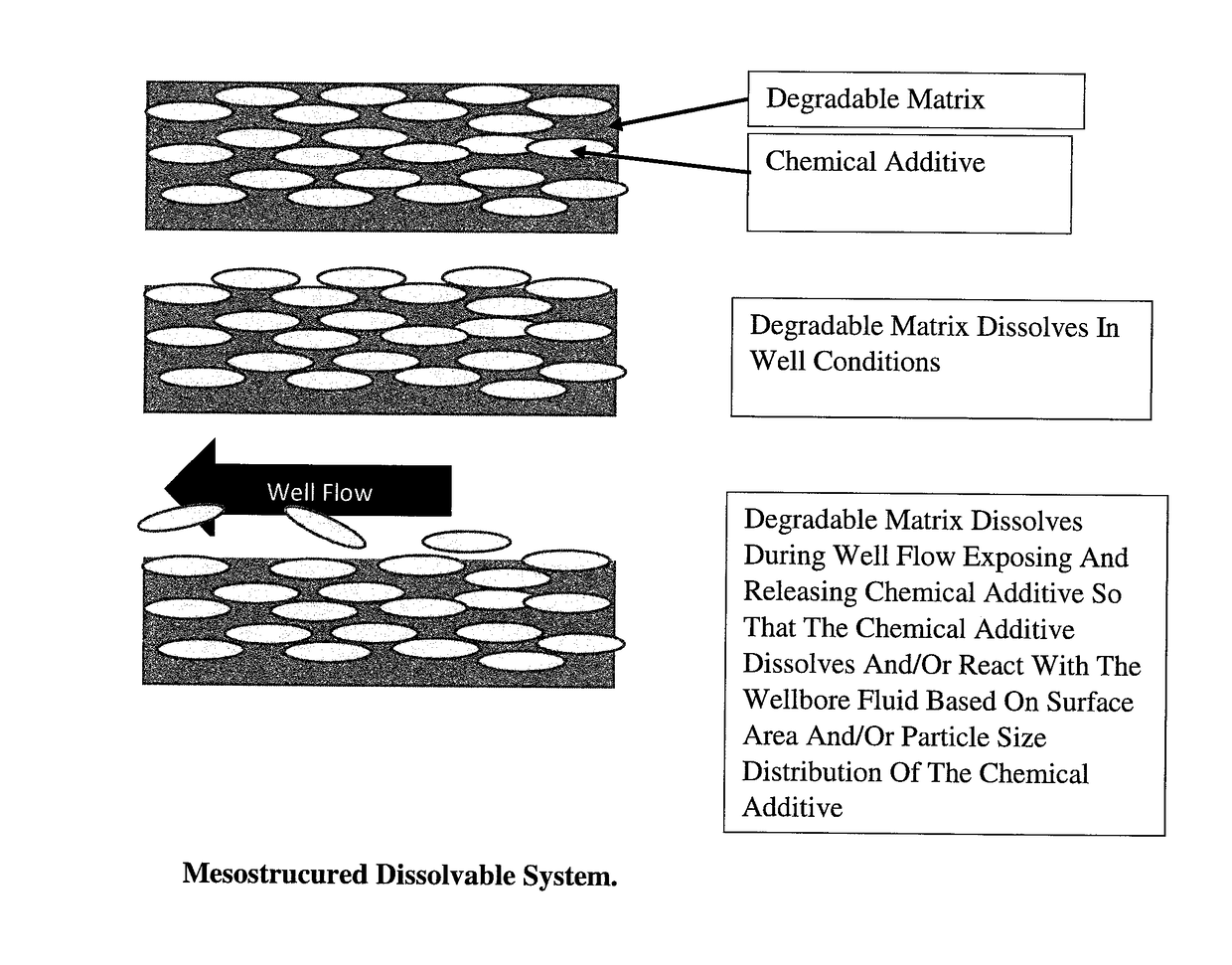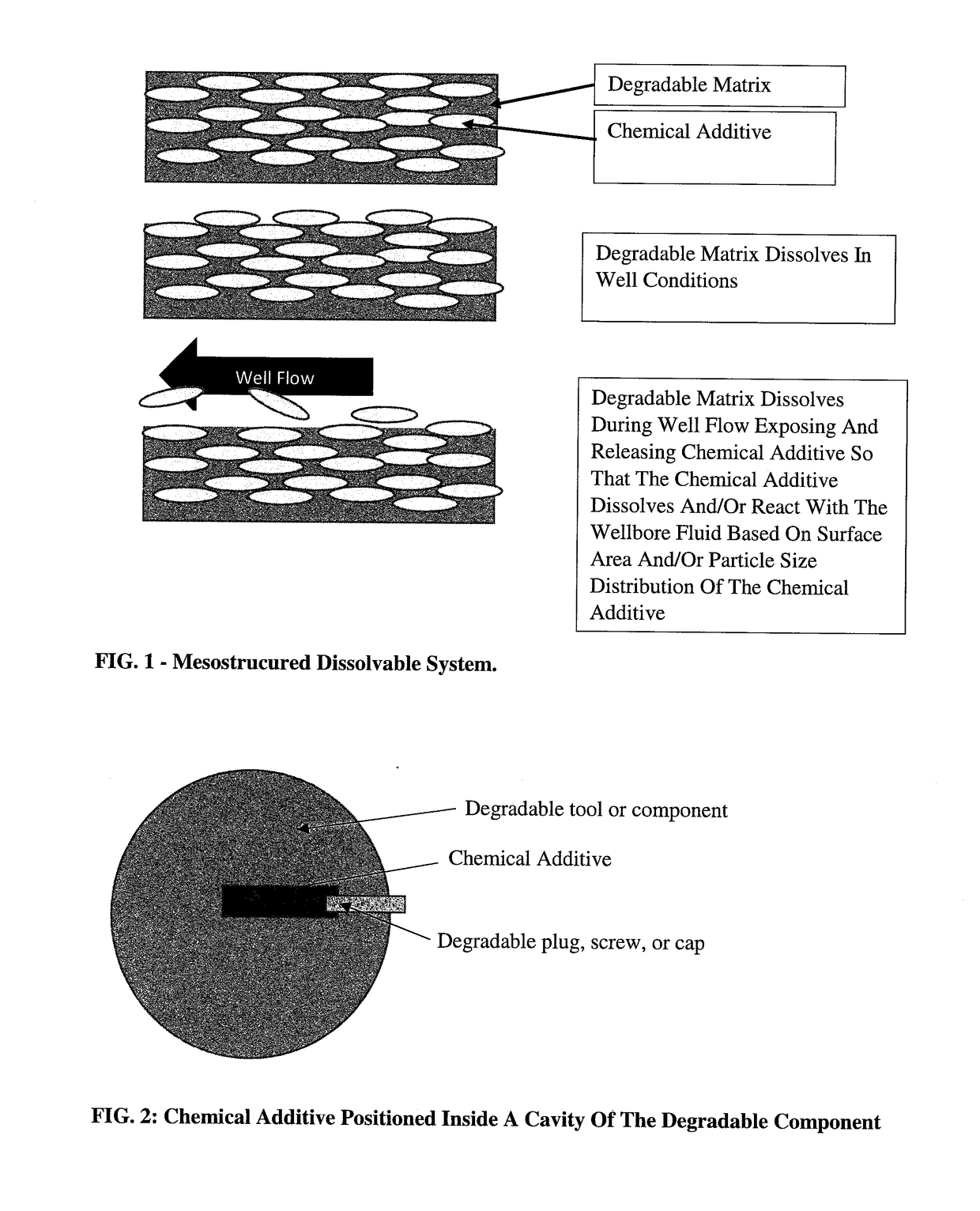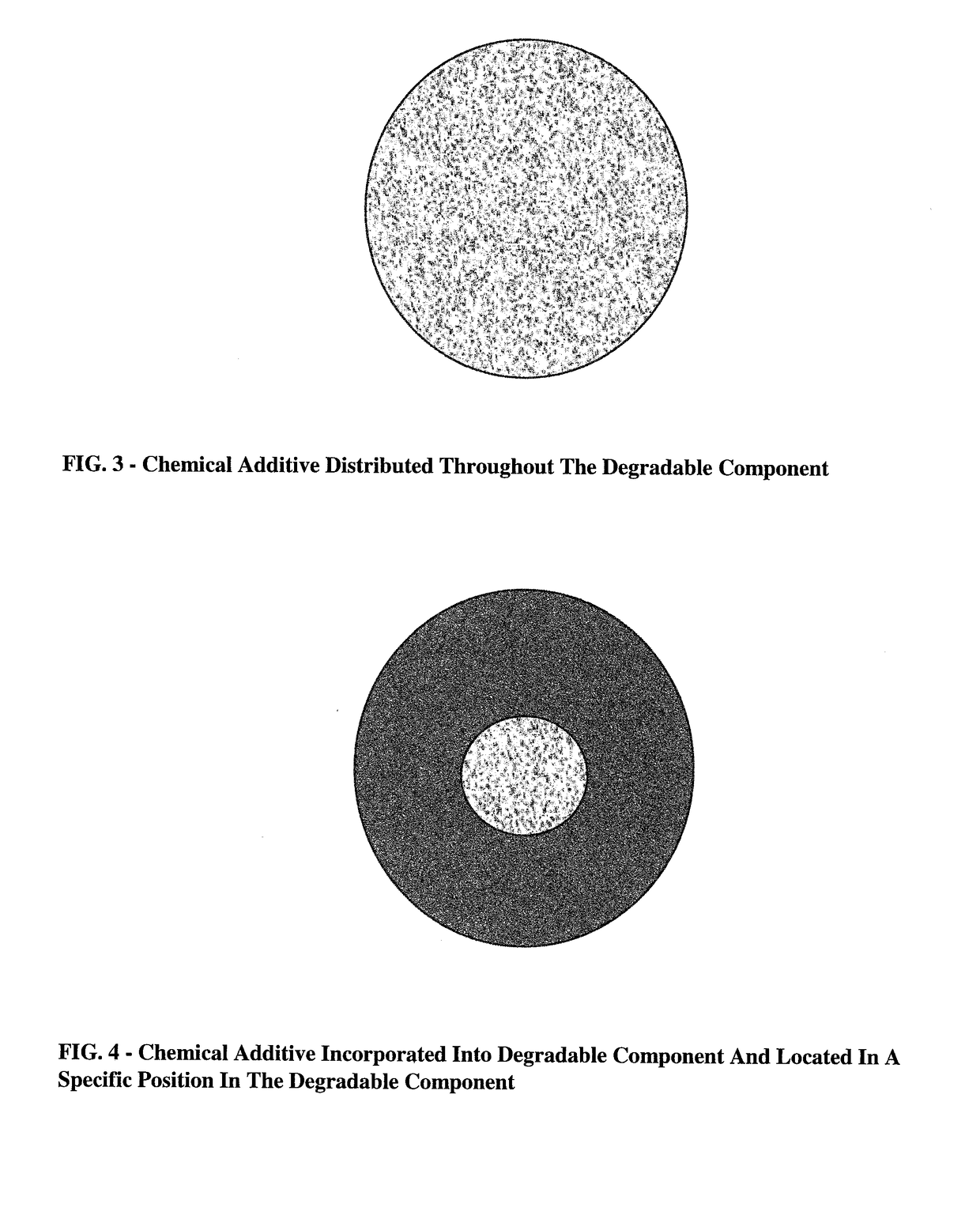Method of Assuring Dissolution of Degradable Tools
a technology of dissolvable tools and tools, which is applied in the field of assuring the dissolution of degradable tools, can solve the problems of increasing the cost and difficulty of intervention activities, affecting the quality of the earth, so as to improve the solvent dispersibility, and improve the effect of strength and conductivity
- Summary
- Abstract
- Description
- Claims
- Application Information
AI Technical Summary
Benefits of technology
Problems solved by technology
Method used
Image
Examples
example 1
Soluble Mesostructured Degradable Tracer
[0225]A mesostrucured tracer / degradable system is provided wherein the degradable component is soluble in the well (aqueous) fluid, thereby exposing the tracer element to the well flow conditions. The tracer element includes stable isotopes not common in the well formation, and which the tracer element is normally in the form of oxide or intermetallic particles. The tracer element is released from the degradable component as the degradable component degrades. The degradable component can be formed of a polymeric and / or metallic material. The released tracer elements can be analyzed on-site by testing the fluid flow or back flow of fluid from the well or by sending a sample of the fluid containing the tracer elements to an outside lab, typically a lab that uses high resolution GC-MS techniques; however, this is not required.
[0226]For example, the tracer element can be formed from rare earth oxide nanoparticles (CeO, Ge2O3, Sm2O3, Nd2O3, etc.) t...
example 2
Tracer Incorporation
[0229]The system as set forth in Example 1 releases tracer elements continuously during degradation / dissolution of the degradable component, and requires knowledge of the total flow of fluid past the degradable component and a recovery of a known percentage of the tracer element to assess the complete or desired amount of removal of the degradable component in the well. Such information can be facilitated by adding the tracer element at a select depth in the degradable component (such as the center of a degradable component [e.g., frac ball, etc.]). In such an arrangement, the tracer element can be added to the degradable component in a more concentrated form; however, this is not required if the release is detectable at lower concentrations. The insertion of the tracer element can be incorporated in the interior of the degradable component by various processes, for example, by drilling a hole or machining a cavity into the degradable component, placing the trace...
example 3
[0230]A dissolvable metal frac ball having outer dimensions of 3.750 inches+ / −0.003 inches is machined to form a hollow core having dimensions of 0.75 inch×2.5 inch. The hollow core thus constitutes less than 15 vol. % of the frac ball. The upper 1 inch of the cavity is machined with female NPT threads to accept a plug. One or more microRFID tags (e.g., 1-5 microRFID tags) having dimensions to fit into the hollow core (e.g., 0.6″ dia×0.1″) are coated with a coating to protect the one or more microRFID tags and / or provide buoyancy to the one or more microRFID tags so that the microRFID tags can float in the flowing water after being released form the degradable component. The coating is typically a non-degradable coating in the well fluid. The coating thickness is generally at least about 0.005 inches and typically about 0.01 inches to 0.1 inches (and all values and ranges therebetween). One non-limiting coating is a polyurethane coating. The coating can optionally can include about ...
PUM
| Property | Measurement | Unit |
|---|---|---|
| hydrostatic pressure | aaaaa | aaaaa |
| pressure | aaaaa | aaaaa |
| temperatures | aaaaa | aaaaa |
Abstract
Description
Claims
Application Information
 Login to View More
Login to View More - R&D
- Intellectual Property
- Life Sciences
- Materials
- Tech Scout
- Unparalleled Data Quality
- Higher Quality Content
- 60% Fewer Hallucinations
Browse by: Latest US Patents, China's latest patents, Technical Efficacy Thesaurus, Application Domain, Technology Topic, Popular Technical Reports.
© 2025 PatSnap. All rights reserved.Legal|Privacy policy|Modern Slavery Act Transparency Statement|Sitemap|About US| Contact US: help@patsnap.com



